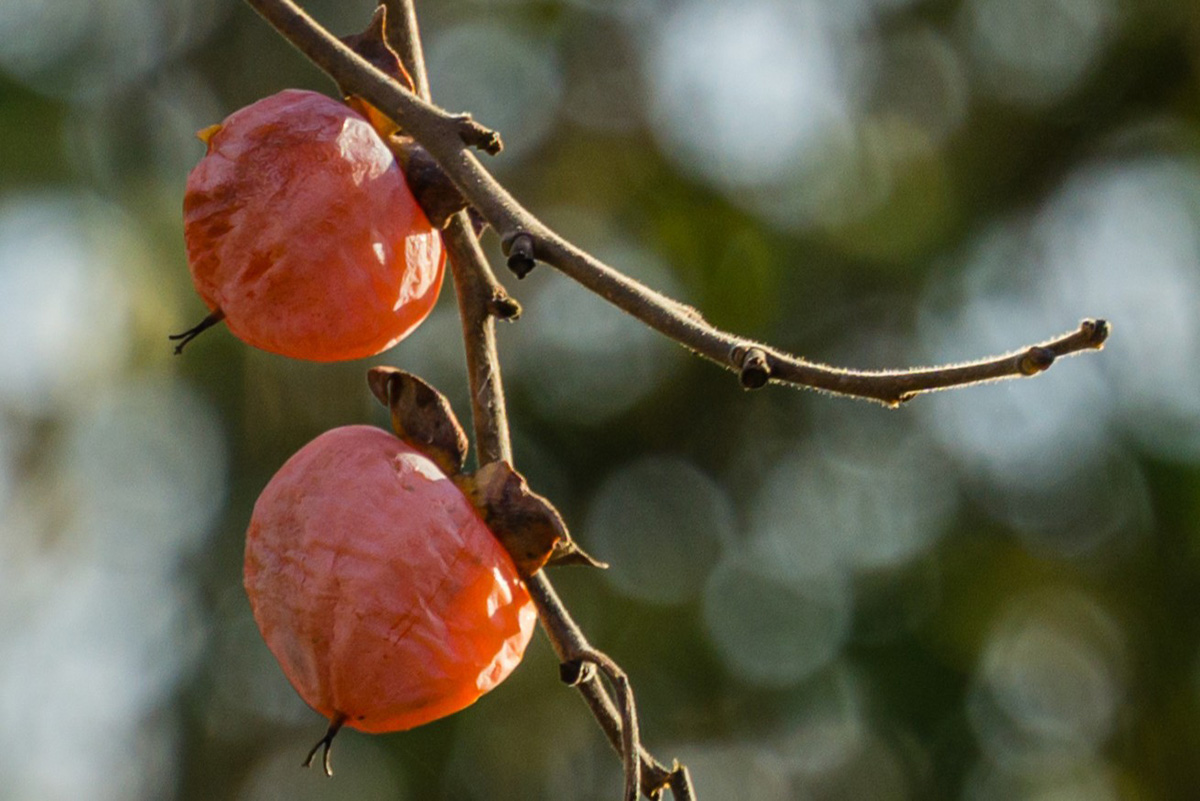
By Rachel Anderson, Extension Educator in Lancaster County
As the woodlands of the southeastern United States shed their leaves and hunker down for winter, the sunset-fleshed fruits of the female persimmon tree can still be seen glittering like jewels amongst the canopy’s yellows, browns and greys. American persimmon, known botanically as Diospyros virginiana, features the last of the season’s edible native fruits to ripen, still hanging on all the way into December. This autumnal timing — and long shelf life of the fruit — naturally lends persimmons a spot on many holiday tables, both as natural decoration and as the star ingredient of tasty puddings, breads and spreads. Their sweet, date-like flavor and smooth, jammy texture are a favorite among many wild food enthusiasts, whether cooked or eaten fresh. And with smaller growing, big-fruited, self-fertile varieties like Prairie Star and Prairie Sun available on the market, it can be hard to say no to planting one (or a whole grove) within reach.